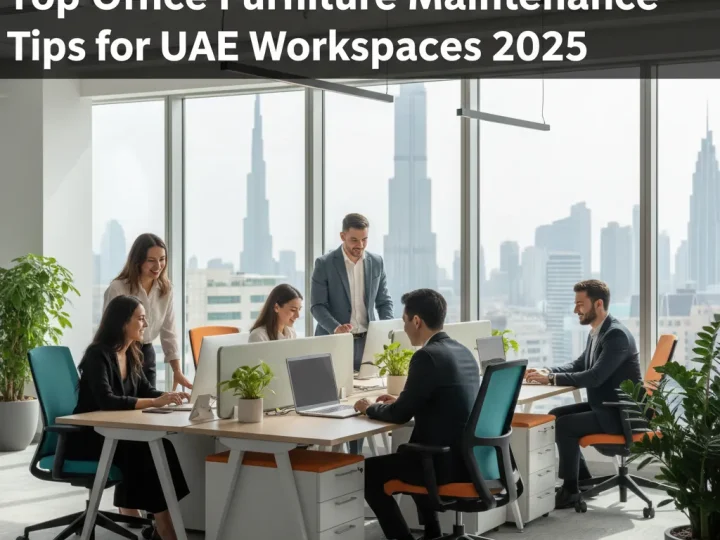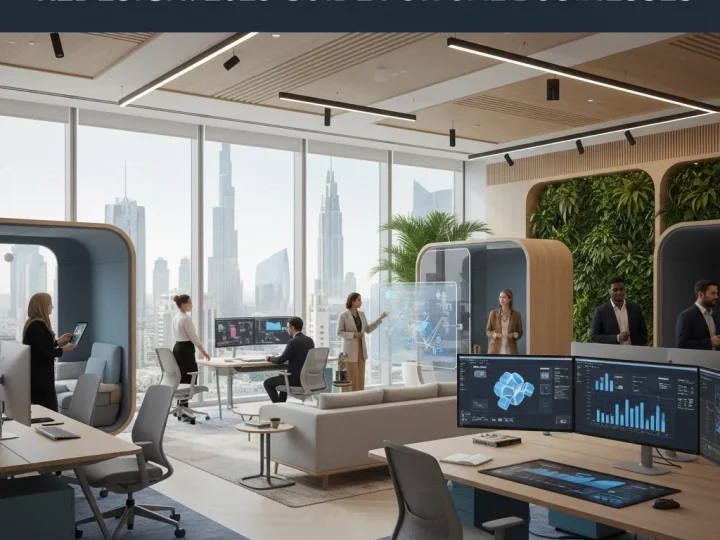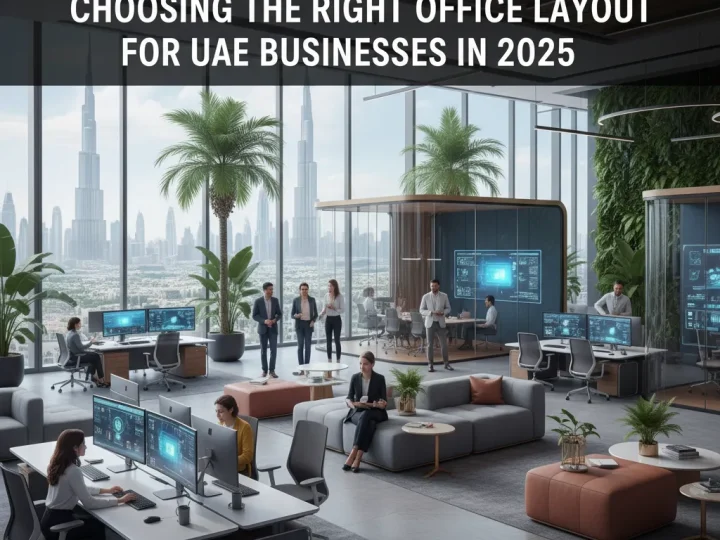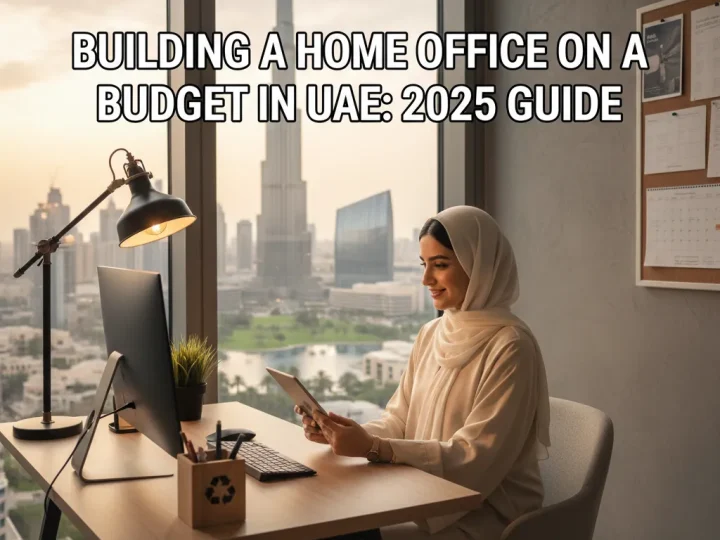

Selecting the right conference room furniture can define the quality of meetings in your organization. Did you know that a well-designed meeting environment can enhance productivity by up to 20 percent? But here’s the twist: many businesses ignore the impact of furniture selection on their meetings. Instead of focusing solely on aesthetics or price, understanding functional needs can revolutionize the way teams collaborate. Learning how to assess room dimensions, integrate technology, and balance comfort with style will not only create a professional atmosphere but also foster better communication and engagement.
Table of Contents
- Assessing Conference Room Needs
- Evaluating Furniture Style Options
- Budgeting And Quality Analysis
- Design And Layout Strategies
Quick Summary
| Takeaway | Explanation |
|---|---|
| Assess Room Needs | Conduct a thorough assessment of room size, capacity, primary usage patterns, and technology integration needs to ensure selected furniture enhances functionality and meets organizational objectives. |
| Evaluate Furniture Styles | Consider table shapes and aesthetic styles that align with your brand identity while supporting the dynamics of meetings—ensure designs promote comfort, interaction, and effective use of space. |
| Establish a Budget Framework | Develop a realistic budget that includes all components of the furniture purchase, and allocate funds strategically based on the primary usage of the spaces to ensure quality investment. |
| Optimize Layout for Interaction | Arrange furniture to enhance communication and engagement by prioritizing clear sightlines, appropriate personal space, and technology integration, while maintaining comfort for participants. |
Assessing Conference Room Needs
Before selecting conference room furniture, a thorough assessment of your meeting space needs is essential. This foundational step ensures that your investment supports your organization’s objectives and work culture. According to research from the University of Salford, factors such as occupant numbers, usage flexibility, and acoustic considerations significantly impact furniture selection decisions. Let’s explore the key aspects to evaluate when assessing your conference room requirements.

Understanding Room Size and Capacity
The physical dimensions of your conference room dictate what furniture will fit appropriately. Start by measuring the room’s square footage and noting any architectural features that might impact furniture placement—columns, windows, doors, and fixed equipment all influence layout options.
Capacity planning is equally crucial. How many people will typically use the space? Research suggests that effective conference room design begins with a thorough assessment focused on room size and anticipated usage patterns, as these factors critically influence the space planning process. For comfortable meetings, allow approximately 25-30 square feet per person. A 12-person conference room typically requires around 300-360 square feet.
Consider your growth projections as well. UAE businesses, particularly startups in Dubai, should factor in potential team expansion when selecting conference room furniture. Choosing modular or reconfigurable furniture can accommodate changing needs as your organization grows.
Identifying Primary Usage Patterns
Conference rooms serve various functions, each with distinct furniture requirements. Will your space primarily host:
- Formal presentations and client meetings: These typically require professional-looking, fixed conference tables and ergonomic executive chairs
- Collaborative workshops: These benefit from reconfigurable furniture and informal seating options
- Video conferences: These need furniture arranged for optimal camera angles and technology integration
- Training sessions: These may require classroom-style setups with writing surfaces
Many UAE organizations, especially new offices and entrepreneurial ventures, need their conference rooms to serve multiple functions. Adaptable furniture that can be easily reconfigured allows a single space to accommodate different meeting styles. Research from ergonomics specialists emphasizes that assessing ergonomic needs directly impacts attendee engagement and wellbeing during meetings.
Technology and Infrastructure Requirements
Modern conference rooms are technology hubs. When assessing your needs, inventory all technology components that must integrate with your furniture:
Power access points are fundamental—participants need convenient outlets for laptops and devices. Consider how many power points you’ll need and where they should be positioned. Furniture with built-in power modules can eliminate unsightly cables and trip hazards.
Data connectivity requirements influence furniture selection too. Will you need hardwired network connections or rely solely on Wi-Fi? Cable management solutions become essential for maintaining a professional appearance and protecting your investment.
Display technologies must be factored into your furniture arrangement. Sight lines to screens or projection surfaces influence table shapes and chair positioning. Audio equipment placement affects furniture arrangement as well—speakers and microphones need proper positioning for optimal sound quality.
For UAE facility managers and interior designers, climate conditions present unique considerations. Air conditioning vents shouldn’t be blocked by tall furniture pieces, and sunlight patterns through windows should be considered to prevent screen glare.
When selecting conference room furniture, this initial needs assessment provides the framework for all subsequent decisions. By carefully evaluating room dimensions, typical usage patterns, and technology requirements, you create a solid foundation for choosing furniture that enhances functionality while projecting your organization’s professional image. The time invested in this assessment phase pays dividends through more productive meetings and more efficient use of your valuable office space.
Evaluating Furniture Style Options
Once you’ve assessed your conference room needs, the next critical step is evaluating furniture style options that align with both functionality and aesthetic requirements. The right style choice creates a cohesive environment that supports your business objectives while making a statement about your organization’s values and culture.
Understanding Table Shapes and Their Impact
The conference table serves as the centerpiece of your meeting room, and its shape significantly influences interaction dynamics. According to design experts at Alan Desk, different table shapes create distinct meeting experiences:
Rectangular tables provide a classic, structured environment that establishes clear hierarchy—ideal for formal board meetings and presentations common in established UAE businesses. These tables maximize seating capacity in narrow rooms and create a sense of order.
Racetrack (or oval) tables soften the formality while maintaining professionalism. By eliminating sharp corners, they create a more approachable atmosphere while still providing good structure for directed discussions. This balanced option works well for organizations navigating between traditional and contemporary business approaches.
Boat-shaped tables feature a wider middle section that tapers at the ends, improving visibility among participants. This design enhances collaboration by allowing people to see more colleagues across the table—particularly valuable for larger groups where inclusive discussion is essential.
Round or circular tables eliminate hierarchy entirely, promoting equal participation and collaborative dynamics. However, they accommodate fewer people relative to their footprint, making them better suited to small or medium conference rooms in UAE startups or creative agencies.
Crescent or U-shaped configurations support presentation-focused meetings where attention should be directed to a primary speaker or display. These setups are particularly effective for training sessions or client presentations where visual aids play a central role.
Balancing Aesthetics with Functionality
Conference room furniture represents a significant investment that communicates your brand identity to both employees and visitors. According to Arcadia Furnishing, selecting furniture that aligns with your company branding while maintaining functionality is essential for creating a cohesive workplace environment.
Modern styles featuring clean lines, mixed materials like glass and metal, and minimalist designs project innovation and forward-thinking—particularly appealing to tech startups and creative agencies in Dubai’s competitive business landscape. These designs typically incorporate technology integration seamlessly, with built-in wire management systems and power access.
Traditional styles emphasizing rich woods, substantial construction, and classic detailing convey stability, reliability, and established expertise. Financial institutions, law firms, and government offices in the UAE often favor these designs to reinforce their authoritative position and long-standing heritage.
Transitional styles blend elements of both traditional and contemporary design, offering versatility that adapts to diverse business environments. These balanced options provide safe choices for organizations serving varied client bases or undergoing gradual brand evolution.
Custom-designed pieces allow UAE businesses to incorporate cultural elements, brand colors, or signature design features that express unique organizational identity. While more investment-intensive, bespoke furniture creates distinctive environments that reinforce brand recognition.
Material Considerations for UAE Environments
The UAE’s climate and business culture present unique considerations when selecting conference room furniture materials.
Engineered wood products with high-quality veneers offer durability and attractive appearance at more accessible price points than solid hardwoods. These materials resist warping in air-conditioned environments where humidity fluctuations occur between indoor and outdoor transitions.
Metal components provide structural integrity and contemporary aesthetics. In the UAE’s business districts, brushed steel, aluminum, and chrome finishes complement the modern architecture prevalent in commercial spaces while withstanding intensive use.
Glass elements introduce visual lightness and create impressions of transparency and openness. However, consider smudge-resistant treatments for glass tabletops, as fingerprints become highly visible in the bright lighting common in UAE office environments.
Leather upholstery conveys luxury and professionalism on conference seating. Full-grain leather offers superior durability for executive settings, while high-quality faux leather provides similar aesthetics with easier maintenance—an important consideration for Dubai’s dust conditions.
Fabric selections should prioritize commercial-grade durability ratings and stain resistance. Opt for tightly woven textiles in moisture-wicking materials that remain comfortable during extended meetings in air-conditioned spaces.
When evaluating furniture style options for your UAE conference room, remember that the best choices balance visual impact with practical functionality. The furniture should support technology integration, accommodate your typical meeting formats, and project your desired professional image. By carefully considering table shapes, aesthetic directions, and material selections, you’ll create a conference environment that enhances collaboration while making a positive impression on both team members and visitors.

Budgeting and Quality Analysis
Developing a realistic budget for conference room furniture while ensuring appropriate quality standards is a critical aspect of the selection process. This careful balance between cost and quality determines not only the immediate satisfaction with your purchase but also the long-term value of your investment. For UAE businesses, especially growing startups and new offices, a systematic approach to budgeting and quality assessment helps maximize return on investment.
Establishing a Realistic Budget Framework
A practical approach to budgeting begins with understanding typical cost ranges for conference room furniture based on quality tier. Entry-level commercial furniture typically costs 30-40% less than mid-range options but may offer fewer customization options and shorter warranties. Mid-range commercial furniture balances quality construction with reasonable pricing, often providing the best value for many UAE businesses. Premium or executive-grade furniture commands significantly higher prices but delivers superior materials, craftsmanship, and design exclusivity.
When developing your budget, adopt a comprehensive perspective that factors in all necessary components. Beyond the conference table, include seating, storage units, presentation equipment stands, and any specialized furniture pieces required for your specific needs. Don’t overlook ancillary costs such as delivery, installation, extended warranties, and potential customization fees, which can add 15-25% to the base furniture cost.
Allocate your budget proportionally, with the conference table typically representing 30-40% of the total furniture expenditure. Quality seating should receive appropriate funding, as it directly impacts comfort during extended meetings. For a typical 12-person conference room in Dubai, expect to budget between AED 25,000-100,000 depending on quality tier and customization requirements.
Consider implementing a value-based budgeting approach that weighs the importance of each space against its utilization rate and visibility. Main boardrooms and client-facing conference rooms justify higher investments, while internal team meeting spaces might function effectively with more economical selections. This tiered approach allows UAE entrepreneurs to allocate resources strategically across multiple meeting spaces.
Evaluating Quality Indicators
Assessing furniture quality requires attention to specific indicators that predict durability and performance. Construction methods significantly impact furniture longevity—look for reinforced joints, proper wood kiln drying, and appropriate use of supporting hardware. Quality tables feature solid core construction or high-grade engineered wood rather than hollow cores or particle board.
Material quality varies dramatically across price points. For wood furniture, examine veneer thickness (thicker is better), grain matching, and finish consistency. Metal components should feature appropriate gauge thickness for their structural role, with quality welding or fastening methods. Upholstery fabric should carry commercial ratings (typically 100,000+ double rubs on the Wyzenbeek abrasion test) to withstand regular use in professional environments.
Manufacturer reputation provides valuable quality context. Established commercial furniture brands with specific experience serving UAE markets understand local environmental conditions and business needs. Research warranty terms thoroughly—quality manufacturers typically offer 5-10 year warranties on structural elements. Limited or short-term warranties often signal lower confidence in product durability.
Quality assessment should include environmental certifications that indicate sustainable manufacturing practices. Look for recognized standards such as GREENGUARD, which certifies low chemical emissions, or FSC certification for responsibly sourced wood. These standards ensure healthier indoor environments while aligning with UAE’s increasing emphasis on sustainability in commercial development.
Optimizing Value Through Strategic Purchasing
Several approaches can maximize value when purchasing conference room furniture in the UAE market. Timing purchases during industry sales cycles can yield significant savings—many manufacturers offer fiscal year-end discounts. Building relationships with commercial furniture dealers provides access to trade pricing and potential customization options at reduced costs.
Consider the modular furniture approach, which allows for initial investment in core pieces with the flexibility to add components as budgets permit. This strategy works particularly well for Dubai startups and growing businesses with evolving needs. Evaluate refurbished options from reputable dealers for potential savings of 40-60% while maintaining professional appearance and quality.
Balance cost-saving measures with strategic investment in key visible elements. The conference table surface and front-facing elements deserve quality investment, while supporting structures and less visible components can utilize more economical solutions. Similarly, prioritize ergonomic quality in seating over decorative elements that don’t impact function or comfort.
For UAE businesses seeking customized solutions, request detailed cost breakdowns that separate design, materials, and fabrication expenses. This transparency allows for targeted adjustments that preserve design intent while managing costs. Consider forming purchasing consortiums with other small businesses to leverage volume pricing typically available only to larger organizations.
By approaching budgeting and quality analysis methodically, UAE businesses can create impressive, functional conference spaces that reflect their professional standards without unnecessary expenditure. The key lies in identifying where quality truly matters to your operations and directing resources accordingly, while finding creative solutions to manage overall costs.
Design and Layout Strategies
The strategic design and layout of conference room furniture directly impacts meeting effectiveness, participant engagement, and overall space utilization. Beyond mere aesthetics, thoughtful arrangement creates environments that support specific meeting objectives while ensuring comfort and functionality. For UAE businesses seeking to optimize their conference spaces, implementing evidence-based design principles yields measurable benefits.
Optimizing Spatial Arrangement for Interaction
Effective furniture layout begins with understanding spatial relationships and their impact on human interaction. According to research from Stanford University, furniture arrangement significantly influences conversation quality and movement patterns within meeting spaces. The study recommends strategic seat placement that facilitates eye contact between participants and adequate clearance around furniture to ensure accessibility.
Start with the primary focal point—typically a presentation screen, whiteboard, or head-of-table position—and arrange seating to provide clear sightlines from all positions. The optimal viewing angle falls within 45 degrees of center, with no participant positioned more than 8 meters from visual displays for comfortable viewing without strain.
Circulation paths require particular attention in UAE conference rooms where hospitality elements like coffee service or document distribution often occur during meetings. Maintain minimum clearances of 90-100 cm between the edge of tables and walls or other furniture to allow comfortable movement. For rooms with frequent reconfiguration needs, consider establishing primary and secondary circulation zones with adequate clearance for both seated participants and those moving through the space.
For Dubai startups and tech companies embracing collaborative work styles, consider breaking from rigid linear arrangements. Research published in Ergonomics demonstrates that spatial configurations promoting social interaction and adaptability enhance engagement and productivity. Implementing mobile furniture elements creates versatile environments that can quickly adapt to different meeting formats—from formal presentations to collaborative brainstorming sessions.
Balancing Density and Comfort
Finding the optimal balance between seating capacity and user comfort presents a common challenge for UAE facility managers. While maximizing occupancy might seem financially prudent, overcrowded conference rooms diminish productivity and create negative impressions. A data-driven approach to space allocation ensures both efficiency and comfort.
For standard conference seating, allocate 60-75 cm of table width per person, increasing to 75-90 cm for executive meetings where participants typically require more materials and workspace. When calculating total space requirements, the table-to-wall relationship proves crucial—maintain minimum clearances of 120 cm behind seated participants to allow others to pass comfortably without disruption.
Consider the psychology of personal space in your layout decisions. In UAE business culture, where relationship building remains central to professional interactions, adequate personal space communicates respect and status. Executive conference rooms should provide 0.9-1.2 square meters per person, while standard meeting rooms can function effectively with 0.7-0.9 square meters per participant.
Table shape influences both capacity and interaction quality. Rectangular tables maximize seating within linear rooms but create distance between participants seated across from each other. Boat-shaped tables improve sight lines while maintaining efficient space utilization. Round tables promote equality but require more square footage per person. Select the configuration that best supports your typical meeting dynamics while working within spatial constraints.
Integrating Technology Seamlessly
Technology integration represents a critical dimension of modern conference room design, particularly for UAE businesses operating in global contexts. Effective layouts accommodate both current technology requirements and future connectivity needs through strategic planning.
Design your furniture arrangement around technology access points to eliminate unsightly cables and reduce tripping hazards. Position tables relative to floor boxes or wall outlets to maintain clean aesthetics while providing convenient power access. Consider furniture with integrated power modules, USB charging ports, and cable management systems to support device use without visual clutter.
Display technology positioning dramatically affects furniture arrangement options. Standard presentation screens require seating positioned within a 100-degree viewing cone for optimal visibility. For video conferencing setups, arrange seating to ensure all participants appear within camera range, typically requiring more compact arrangements than in-person meetings might otherwise dictate.
For UAE offices implementing hybrid meeting formats, create zones that accommodate both in-person and remote participation equally. Position conference cameras at eye level, typically 120-130 cm from the floor, and arrange seating to ensure facial visibility for all participants. Microphone placement should consider typical speaking patterns—ceiling-mounted systems work well for open discussions, while tabletop options better serve formal presentation formats.
Lighting considerations intersect with technology needs in conference room design. Position furniture to minimize screen glare from windows or overhead lighting. In Dubai’s bright environments, window orientation significantly impacts screen visibility—arrange tables perpendicular to windows when possible, or ensure adequate window treatments for light control during presentations.
By implementing these design and layout strategies, UAE businesses create conference environments that enhance communication, support technological needs, and optimize valuable real estate. The most successful designs acknowledge both functional requirements and cultural context, resulting in spaces that facilitate productive engagement while reflecting organizational values.
Frequently Asked Questions
What factors should I consider when selecting conference room furniture?
When selecting conference room furniture, consider room size and capacity, primary usage patterns, technology and infrastructure requirements, and the overall style and aesthetics that align with your brand identity.
How does the shape of a conference table impact meetings?
The shape of a conference table influences interaction dynamics. Rectangular tables promote structure, while round tables encourage equal participation. Boat-shaped tables improve visibility, and U-shaped configurations enhance presentations.
What budget considerations should I keep in mind for conference room furniture?
Establish a realistic budget that includes all components of the furniture purchase, such as seating, storage, and technology integration. Allocate funds based on the primary use of the space, typically budgeting 30-40% for the conference table itself.
How can I ensure my conference room furniture is ergonomically friendly?
Choose seating with ergonomic designs to enhance comfort during meetings. Look for adjustable height features, lumbar support, and materials that promote proper posture to enhance the overall meeting experience.
Transform Your Conference Rooms with Tailored Solutions from SAGTCO
Selecting the right conference room furniture is crucial for fostering productive discussions and impactful meetings. Have you assessed whether your current furniture meets functional needs? With insights from our comprehensive guide, you now recognize the importance of considering room dimensions, usage patterns, and technology integration when making these decisions. Yet, even the best knowledge requires the right execution!
At SAGTCO, we specialize in designing and delivering customizable office furniture solutions that not only enhance your workspace aesthetics but also align with your specific corporate objectives. Whether you’re expanding in Dubai or need adaptive seating for collaborative workshops, our expert consultations and tailored offerings ensure your conference rooms reflect both style and functionality. Don’t compromise on quality or comfort—get started now by exploring our product catalog at SAGTCO.com. Elevate your meetings, engage your teams, and make a lasting impression today!




